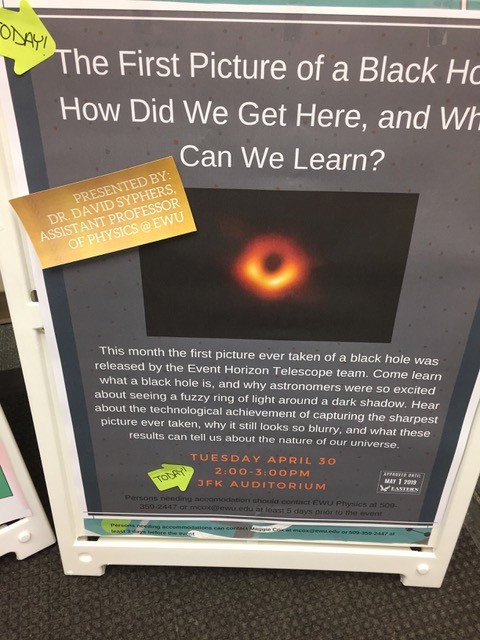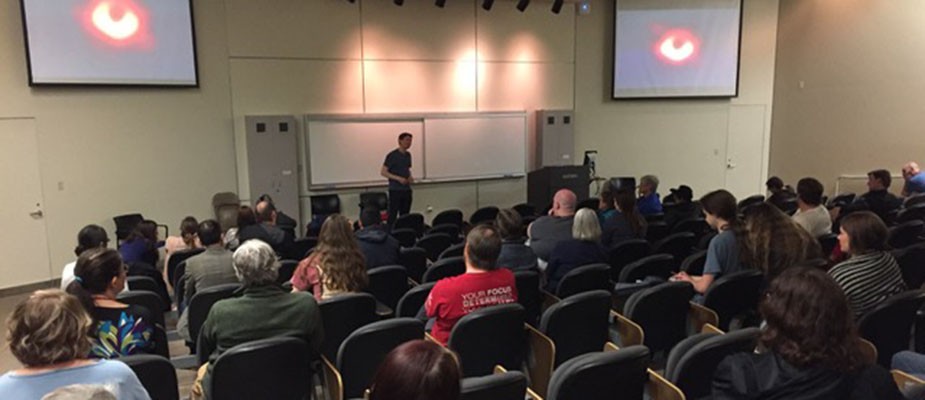We are going where no person has gone before—inside a black hole. OK not exactly, but Tuesday David Syphers, EWU assistant professor of physics, took a crowded JFK Auditorium inside the recently released, first ever image of a supermassive black hole.
“It’s important to me to give current event talks like this because I want people to get a taste of forefront science, and understand why it’s so exciting,” said Syphers.

On April 10, the Event Horizon Telescope team, comprised of more than 200 scientists from 20 countries, released an image of a black hole that resides some 55 million light-years away from Earth. It is considered a supermassive black hole with a mass 6.5 billion times that of the sun.
Sure, scientists already believed black holes existed. But photographic evidence was the goal of the Event Horizon Telescope team’s mission. “Seeing is believing, and this is a good one,” said Syphers.
So how exactly did the scientists manage to see something so far away? Syphers says the team used something called interferometry, which is a fancy way of saying several small telescopes worked together to make one big telescope. The Event Horizon Telescope is a planet-scale array of eight radio telescopes placed all over the globe. The result is a virtual telescope with unprecedented sensitivity and resolution.
Syphers can help put the difficulty of this image gathering mission into perspective for those of us who can’t quite grasp a distance of 55 million light years. “This is like trying to find an orange on the moon,” he explained. “It’s a really tricky thing to find.”
Then there’s the resolution needed to see detail on an image millions of light years away. Syphers compared it to someone holding up a newspaper in Paris and another person trying to get a legible photo from New York City. This clearly is not as simple as snapping a quick picture on your iPhone.
The eight telescopes gathered data for four days in April of 2017. At that point scientists had no idea what they had. That’s because there is no single photo. As Syphers explains it, raw radio data looks nothing like a picture. Researchers spent two years gathering and comparing all these data—again, four days of data from telescopes spread all over the world. And what they discovered when they put it all together was a single image of a supermassive black hole.
Obviously, this was a milestone moment for the scientists on the Event Horizon Telescope team, but it is also important for the science community the world-over. Syphers says the discovery leads the way for scientists to photograph more “really cool” astronomical phenomena we’ve never seen before. And we have a feeling he’d be more than happy to keep us educated on the next great find.

“We have a wonderful community of scholars at Eastern, and I think part of being a scholar is sharing your understanding with others,” Syphers said. “Our colleagues in other departments, students from across campus and the public all deserve to hear about cool advances in cutting-edge topics.”

